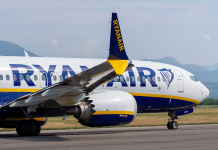Many people travel from across the world to Scandinavia hoping for a spectacular northern lights … [+]
getty
As the ability to travel slowly returns, Scandinavia’s travel industry is gearing up for life after the pandemic. With the entire SAS long-haul network back in the air from this fall and startup airline Norse Atlantic launching in 2022, Scandinavia will be within relatively easy reach from North America.
But visiting the region for the first time can turn up many surprises, not least the expense. Here are five travel tips to help first-time visitors make the most of their trip to Scandinavia.
Watch your budget
First and foremost, it’s no secret that Scandinavia is one of the world’s most expensive regions to visit. If you choose accommodation and dining options based on your home country habits, the cost will quickly mount up. But a trip to Scandinavia doesn’t have to break the bank.
Train travel can save money especially if you have time to spare. It’s also the best way to see the Scandinavian countryside without having to hire a car or splash out on expensive organized tours.
Most high-end hotel rooms are just as compact as their cheaper alternatives and with so much to see and do, you’ll barely spend any time there. Choose budget hotel chains and guest houses in cities to save on your budget. In rural areas, look for cabins with kitchenettes on campsites.
For food, do as the locals do and eat a simple packed lunch. Some hotels offer the chance to make up a packed lunch from the breakfast buffet for a relatively small fee. Avoid expensive bottled water by sticking to tap water. It’s safe all over the region and tastes great.
Finally, make the most of free attractions. For example, Oslo’s Vigeland Sculpture Park serves as one of the best art galleries in the region and is entirely free to visit.
Oslo’s Vigeland Park is one of Scandinavia’s top free tourist destinations.
David Nikel
The same is true of the Stockholm City Museum that tracks the city’s transformation from a small trading post used by German merchants into a modern global capital. It’s just one of many free museums across the region.
Plan ahead
The best way to stick to a limited budget is to book all accommodation and transport well ahead of time. Domestic flights and trains are cheapest at least two weeks before departure, with both options leaping in price on the day.
The emerging trend of slow travel encourages a “less is more” attitude. High prices mean it’s tempting to rush through Scandinavia, but slowing down can save money. Renting an AirBnB or cabin is much cheaper than a hotel, with further savings possible by cooking your own meals.
Booking hotels and transport in advance limits flexibility but it’s the best plan for those on a tight budget.
Embrace the outdoors
While there are some impressive amusement parks in Scandinavia such as Liseberg in Gothenburg, Sweden, Scandinavian nature is the only theme park you’ll need.
For the ultimate experience, sleep under the stars. Wild camping is permitted thanks to allemannsretten, the freedom to roam laws of Denmark, Norway and Sweden.
But the advice to embrace the outdoors isn’t just limited to the rural parts of Scandinavia. The region’s cities are known for their urban planning that promotes pedestrian and cycle paths and increasingly makes the most of waterfront areas. The harbour baths of Copenhagen are the perfect example.
Oslo’s city forest Nordmarka is only 20 minutes away from the city centre by train.
getty
The benefits of cycling to the environment and our own health are numerous, but often trying to get around an unfamiliar city on two wheels is more trouble than its worth. Not so in Scandinavia, where even smaller cities have embraced bicycle sharing programs.
Dress for all weather
Frustrating as it is to hear when drying out after a sudden downpour, the infamous Norwegian saying ‘there’s no such thing as bad weather, only bad clothes’ is grounded in truth. No matter the season, bring clothes for all weather.
This includes waterproof and windproof outer layers in the summer and sunglasses and sunblock in the winter and early spring. Yes, sunglasses and sunblock! When snow is on the ground, the reflected sun can be dazzling and winter sunburn isn’t fun.
Cards over cash
Even before the pandemic, cash was rarely used on a daily basis in all the Scandinavian countries. Restrictions over the last 18 months have only accelerated the inevitable transition to a cashless society.
Nordic mobile payment providers such as Swish and Vipps are widely used but generally require a local cellphone number to activate. However, Visa and Mastercard can be used to pay for even the smallest purchase, so make sure your debit and credit cards are approved for use in a foreign country.
If you prefer to carry cash, just be prepared for some venues not to accept it. Even those who do may struggle for change if you only have high-value banknotes. It’s best to stay digital and keep just a little cash for emergencies.
Escape the ordinary and discover the extraordinary! From bustling cities to serene landscapes, every journey begins with a single step—let us guide yours. Enjoy curated itineraries, hidden gems, and hassle-free bookings designed for explorers at heart. Whether it's a weekend getaway or a globe-trotting adventure, your Next unforgettable experience is just a click away.










